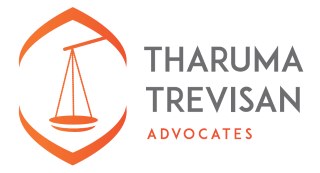
A Review of the Environmental Management and Coordination Act (Extended Producer Responsibility Regulations 2020)
By Ian Njathi
LL.B., LLM, Dip in Law
1. Extended Producer Responsibility (EPR) refers to the obligations placed on producers and manufacturers of goods and services to reduce pollution through implementation of environmentally sound practices in all phases of a products life cycle including post- consumer and the end of life cycle of the product.
2. EPR comprises of designing products for re-use, recyclability of products, creation of take back schemes, composting among other environmentally sound and sustainable recovery and disposal measures.
Why are the EPR Regulations important?
3. The Environmental Management and Coordination Act (Extended Producer Responsibility Regulations) of 2020 were enacted to provide for mandatory EPR schemes for all products and packaging in all phases of their life cycle to enhance environmental sustainability.
4. Following this, the regulations are a right step towards achieving sustainable goals of the country particularly in the environmental field owing to the fact that they are geared towards reduction of pollution and environmental degradation in the manufacturing field ensuring that proper efforts are in place to address pollution and degradation issues.
5. Secondly, the regulations allow for sustainable use of natural resources by providing for reduction of waste at the source, use of environmentally friendly products design and packaging as well as ensuring that cleaner production processes are implemented and used in production and manufacturing.
6. Additionally, the regulations promote the growth and development of a circular economy, which refers to an economy which focusses on initiatives for designing and redesigning mechanisms that eliminates and separates out waste from products, extraction of maximum value from natural resources and creation of new value from material that would have gone to waste.
7. Furthermore, the EPR Regulations strive to promote a culture of environmental consciousness and responsibility in the production life cycle and inclusion of environmental costs at the end of life management of products in the sale price of a product so as to enhance and promote adoption of designs that reduce environmental impacts of the products.
What are the obligations placed on producers?
8. The EPR Regulations place certain obligations on the producers of goods some of the obligations include;
a) Obligation to reduce pollution and environmental impacts of the product introduced to the market;
b) Obligation to design products and packaging materials that work to minimize waste, facilitate re-use, recycling, recovery and are environmentally friendly art their end-life;
c) Obligation to establish post-consumer collection and take back schemes system which may include a deposit refund system;
d) Obligation to take financial and/or physical responsibility for the management, treatment and disposal of their post-consumer products and end of life treatment for the waste generated by their products;
e) Obligation by a producer marketing a product to take responsibility for taking back, collecting and treating the waste resulting from the products ;
f) Obligation to provide updated information on quantities of products introduced to the market, recyclability and reusability of the product, interpretation of packaging labels, market traceability mechanism and any other prescribed information through reporting system established by NEMA;
g) Obligation to provide consumer with information on their role on reuse, return take back points and raising awareness on management of post-consumer products introduced to the field;
h) Obligation to register and provide reports on the status of their implementation of their EPRs through the reporting system established by NEMA;
i) Obligation to carry out product life cycle assessment in relation to their products for enhancing environmental sustainability;
j) Obligation to put in place circular economic initiatives and other measures to reduce impacts of their product on health and environment.
Products covered under the EPR Regulations
9. The Regulations cover mainly products that negatively impact the environment and health, pose a challenge in recycling or recovery operations and those that generate high management costs. The products are listed under Schedule 1 of the regulations and include
(a) Packaging materials
(b) Composites (based on paper)
(c) Agricultural film
(d) Batteries
(e) Oils
(f) Metals
(g) Plastic products
(h) Glass
(i) Electrical and Electronic Equipment (EEE)
(j) Furniture
(k) Graphic paper
(l) Mercury Auto Switches and thermostats
(m) Paints
(n) Pharmaceuticals products including packaging
(o) Textiles
(p) Tyres
(q) Vehicles
10. The regulations require that any person or entity in the production, importation, marketing or distribution of the products listed in schedule 1, must obtain Producer Responsibility Registration from NEMA the period of which is a maximum of four years and renewable every year unless revoked, suspended and cancelled by NEMA.
11. Where the producer is an individual, NEMA will issue a Producer Responsibility Number (PRN) and a Producer Extended Responsibility Number (PERN) will be issued to members of a Producer Responsibility Organisation (PRO).
12. The task of maintaining and updating the register of all registered PRO falls under the purview of NEMA.
What are the requirements for registration or renewal of PROs?
13. The regulations provide for requirements that must be met for producers to qualify for registration or renewal of Producer Responsibility Organisations. Some of those requirement include
i) Proof of registration as a company limited by guarantee
ii) List of membership and proposed fee structure of the membership
iii) 2 year work plan and budget (to be reviewed biannually)
iv) Updated list of membership forming or reviewing membership to the PRO
v) Operations and management plan of the scheme including details if directors, physical address and lease agreement of the facility
vi) Sample copy of contracts when registering/ actual copies if contracts entered into during renewal with all waste management service providers
vii) Payment of the prescribed fees
viii) Signed minutes of engagement with proposed actors of EPRs
ix) Dispute resolution mechanism for actors in the scheme
14. To enable a PRO to undertake stakeholder engagement, NEMA may issue a 90 day interim permit.
Role of NEMA in Extended Producer Responsibility
15. NEMA plays a crucial role in regulating EPRs such as monitoring the operations of extended producer responsibility chains and producer responsibility organisations by setting operational rules and targets which include;
a) Registration of producers bearing extended producer responsibility obligations.
b) Authorisation of voluntary compliance schemes according to set out requirements.
c) Issue certificate of registration of extended producer responsibility for individual and collective schemes.
d) Registration and Certification of individual producer compliance schemes and collective producer responsibility organizations;
e) Renewal of registration and issuance of annual operational licenses.
f) Determination and review of the terms of reference for registration and certifications from time to time.
g) Undertaking Periodic review of extended producer responsibly targets.
h) Maintaining registration of all licensed producer responsibility both individual and collective which shall be made available to the public.
i) Updating the list of covered products within the extended producer responsibility;
j) Maintaining and updating periodic data transmitted by producer responsibility organizations;
k) Publishing annual status reports of compliance schemes;
l) Evaluating the operations of extended producer responsibility chains;
m) Enforcement of EPR obligations
n) Ensuring proper implementation of EPR chains, including assessment of product and waste chains (quantities marketed, waste collected and treated, etc.)
o) Verify that producer responsibility organizations comply with the terms of their authorisation, and take measures to sanction those that do not comply.
16. In addition to the role of monitoring the operations of EPRs, NEMA also has the role of conducting annual audits and overseeing all registered and licensed producer responsibility organizations and individual producer schemes.
17. The data collected during the auditing process will be used to improve the performance and regulatory process as well as to sanction actors not in compliance with the regulations and laid down law.
EPR Schemes and Waste Management
18. The EPR Regulations provide for schemes and waste management programs to help in ensuring that the environment is well protected from product waste at all stages of their life cycle.
19. The regulations calls for Waste treatment service vendors to provide partial or complete waste management services, including collection, transport, reconditioning and preparation for reuse, recovery of valuable materials, and final disposal.
20. Further, the EPR Regulations call for Waste treatment service vendors to operate under written agreement and contract and in compliance with the terms governing EPR chains.
21. In addition to this, the Regulations provides for who comprises as a waste holder and limits them to a producer, importer or distributor that has set up an approved individual collection and treatment system or joined an authorized producer responsibility organization to manage waste.
22. Moreover, the Regulations provide that Private entities and business may have their end-of-life products collected, or bring them to a joint collection point set up by a producer responsibility organisation and that a person may discard used products free of charge, by turning them over to county waste management channels, product and packaging distributors or operators.
23. Further to this the, the Ministry of Environment and Forestry is required to set collective national EPR objectives and frameworks for grant authorisations to EPR compliance schemes
How are grievances handled when it comes to EPRs?
24. Any person aggrieved by a decision of the Authority (NEMA) may appeal to the National Environmental Tribunal (NET). The grievance may relate to either
a) The grant of a licence or permit or a refusal to grant a licence or permit, or the transfer of a licence or permit, under the Environmental Management and Coordination Act or their regulations.
b) The imposition of any condition, limitation or restriction on his licence under the Act or regulations made thereunder;
c) The revocation, suspension or variation of his licence
d) The amount of money which he is required to pay as a fee
e) The imposition against him of an environmental restoration order or environmental improvement order by NEMA under the Act or subsequent regulations, may within sixty days after the occurrence of the event against which he is dissatisfied make an appeal to the NET.
What are the offences and penalties under the Regulations?
25. The Regulations set out offences that may be committed by EPRs and the penalties that the offending party will pay to remedy the offences. For instance, it shall be considered an offence for an individual compliance scheme or a producer responsibility organization not to demonstrate progress towards achieving set targets and as such where a producer responsibility organization is found guilty of the offence, the government may declare a ban on the product to prevent further environmental degradation.
26. Secondly, it is an offence under the regulations for a producer or producer responsibility organisation to under-declare or give false information on quantities held or managed under the EPR scheme.
27. Further, it is an offence under the regulations for a producer not being a member of a related producer responsibility organization to fail in fulfilling their individual obligations. Such offences shall be liable upon conviction to a fine not exceeding Kshs two million or to imprisonment for a term not exceeding two years or to both.
28. The regulations offer a breath of fresh air in ensuring that environmental sustainability is maintained and avoids environmental degradation as it covers some of the products that greatly affect the environment.
29. Furthermore, the regulations provide a well laid out plan on how to address products life cycle so as to ensure the end products is not a pollutant to the environment.
Latest Posts
Step by Step Guide to Subdvision of Land in Kenya
Agnetah Muli LL. B, KSL Dip. What is Subdivision? The process of subdivision involves the division of land into two or more parcels. The purpose is to...
COMPREHENDING REDUNDANCY IN EMPLOYMENT LAW – KENYA
“Fairness in all forms of termination is the staple of labour law”- Anon By Quincy Jesse Kiptoo LL.B. (Hons), CPM, Dip in Law The word Redundancy...

